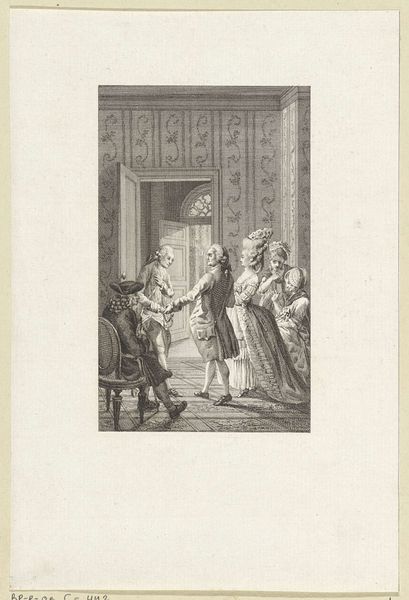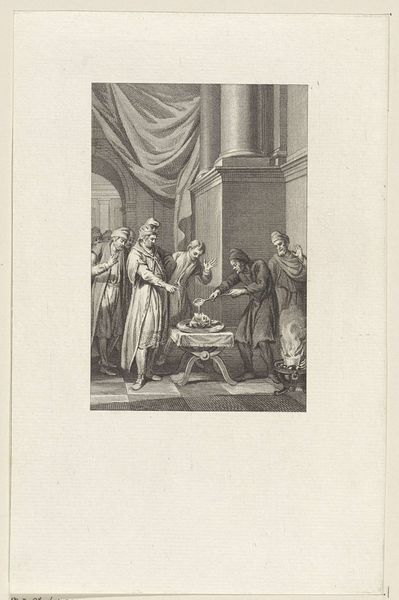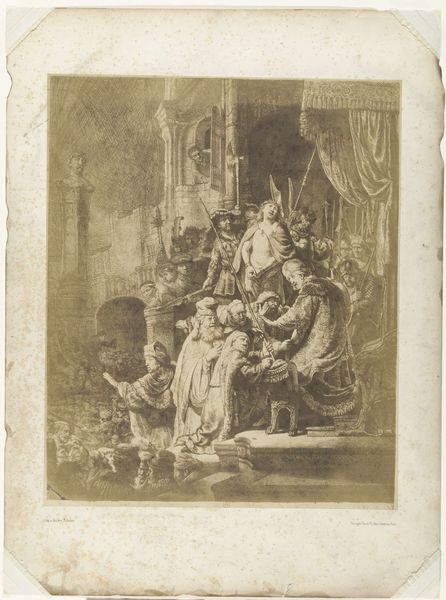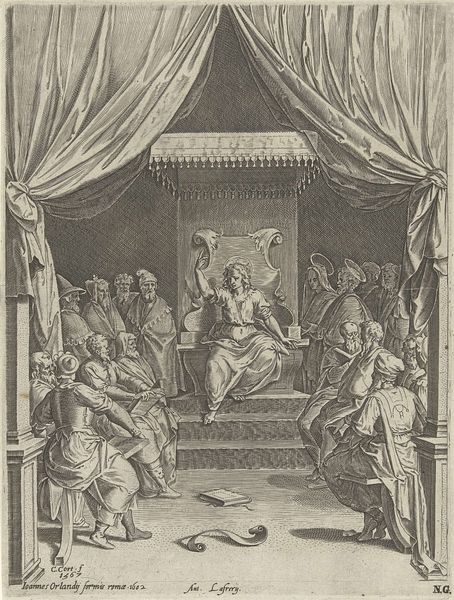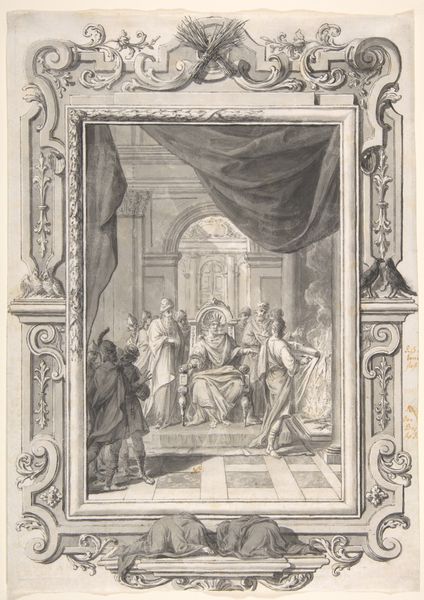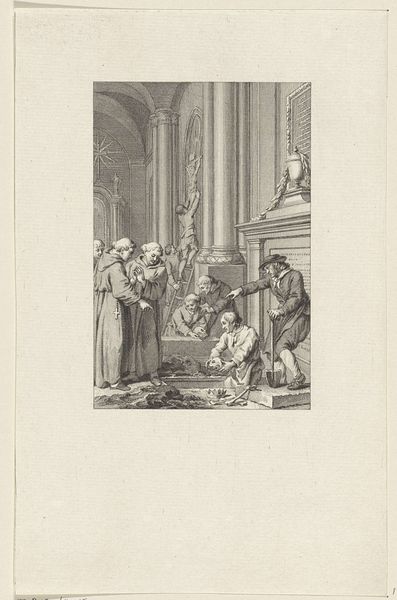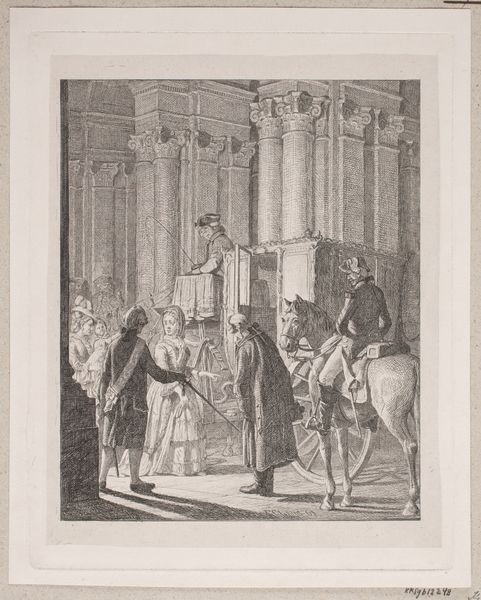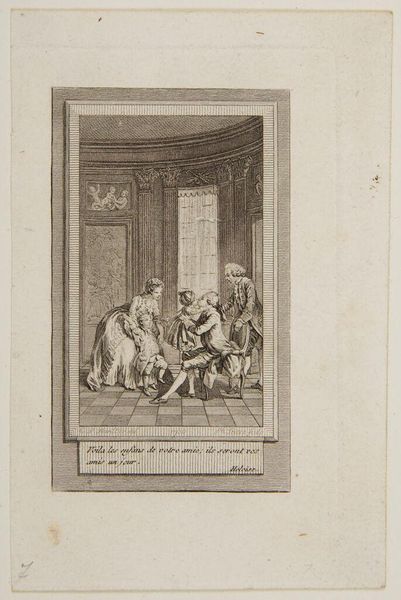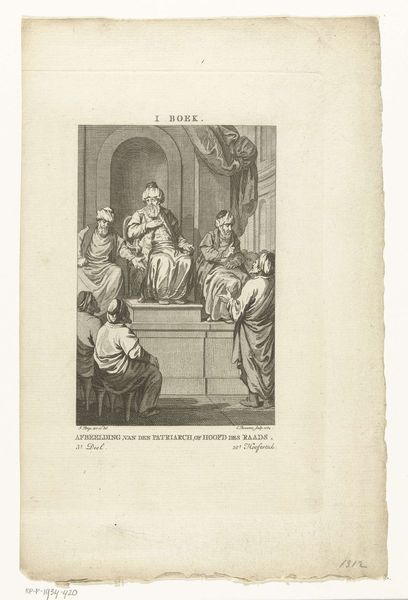
drawing, print, etching, intaglio, paper, engraving
#
drawing
# print
#
etching
#
intaglio
#
paper
#
history-painting
#
academic-art
#
engraving
Dimensions: 141 × 110 mm (plate I×); 141 × 110 mm (plate ×, left); 139 × 96 mm (plate ×, right); 140 × 99 mm (plate ×I); 154 × 252 mm (sheet, unfolded)
Copyright: Public Domain
Curator: Here we have "Plates 9-11, from Nella Venuta," an engraving by Franz Edmund Weirotter, dating back to 1764. It is currently part of the Art Institute of Chicago's collection. Editor: Immediately, the composition strikes me as both reverent and subtly unsettling. There's this intense power dynamic depicted through posture and placement, highlighting submission. I find myself pondering the nature of authority being presented here. Curator: Absolutely. This work reflects the political climate of the time, depicting a formal reception. Consider the elaborate interior – the ornate crucifix, the heavy drapery. Weirotter, working within the academic art tradition, uses these visual cues to reinforce the institution's authority and the Church's undeniable public role in society. Editor: I'm curious about the performative aspect. Kneeling, the presentation of self. Are we seeing genuine respect or calculated obedience? And what power structures does this reinforce? The way the figures are rendered feels almost theatrical, raising questions about genuine emotion versus societal obligation. Curator: The visual language here communicates clear roles. It echoes a long history of religious imagery intended to instruct and inspire deference, fitting into the existing societal structures that shaped much of daily life during this period. Etchings like this would circulate widely, acting as both documentation and propaganda. Editor: And that's where it gets even more complex, right? As reproductions, these prints play an active role in constructing and disseminating ideas about power. The mass availability complicates our understanding of it because Weirotter’s creation also had the ability to allow for dialogue about this power to take place. It challenges viewers like myself to question who benefits from such displays and who might feel marginalized by them. Curator: Precisely. Understanding these artworks within their social and political milieu is vital. The distribution and reception of images such as "Nella Venuta" reveals much about 18th-century societal values. Editor: Analyzing it with you really helped bring forth these historical layers of meaning—the intricate interplay between art and power is something I'll ponder longer after this viewing. Curator: Agreed, by examining these plates in context we can gain some insightful understanding of art's impact on and reflections of socio-cultural dynamics of its time.
Comments
No comments
Be the first to comment and join the conversation on the ultimate creative platform.



